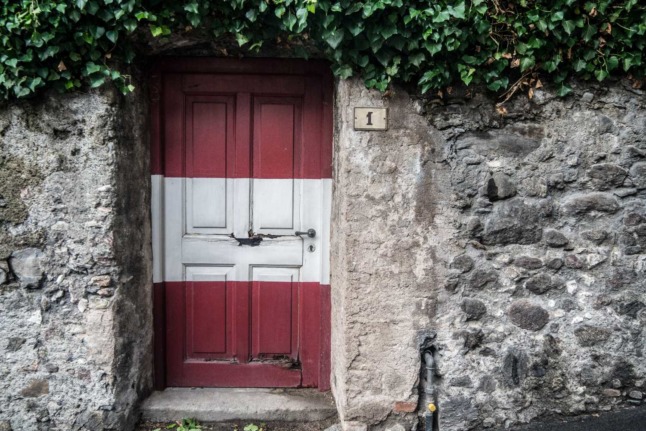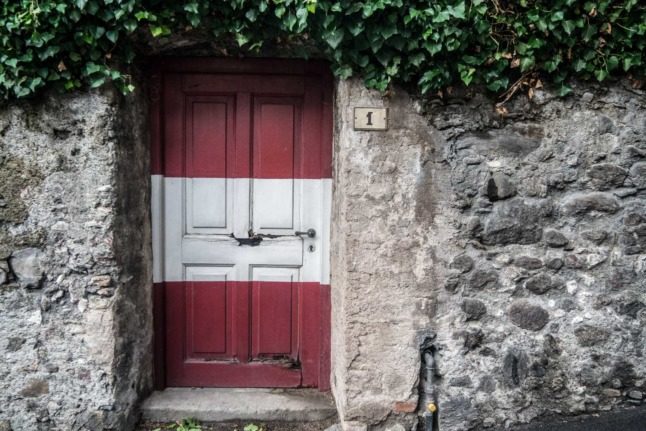Known as one of the most difficult citizenships to acquire in Europe, there are three pathways towards becoming an Austrian national.
These are acquisition by descent, marriage and acquisition by award.
The vast majority of Austrian citizens receive their status via descent – i.e. by being born in Austria to Austrian parents.
Citizenship by acquisition – or naturalisation as it is most often referred to – is how the vast majority of foreigners secure their status.
Citizenship by descent
It is sometimes puzzling to people from other countries such as the United States that being born in Austria does not entitle you to Austrian citizenship.
Currently, only children born to an Austrian citizen mother automatically become Austrian citizens themselves at birth.
READ MORE: Everything you need to know about applying for Austrian citizenship
Children born to married parents where the father is Austrian will also acquire citizenship.
If the mother is not Austrian and the father is but the couple is not married, it will require the father to officially recognise parenthood via a formal process within eight weeks of the birth.
An acknowledgement of paternity (Vaterschaftsanerkenntnis) can be made for the child to become Austrian.
This may take place via a court procedure. More information is available here.
Where one of the child’s parents has a different nationality, the child will require dual citizenship (provided this is allowed by the other country).
Generally speaking, this will be the only instance in which dual nationality is allowed as Austria generally forbids this when citizenship is acquired through the process of nationalisation.
Citizenship is also available by descent to descendants of people forced out of the country by the Nazis. More information is available on that here.
The spouse of an Austrian national may obtain Austrian citizenship if they have lived continuously in Austria for at least six years and have been married and lived with their partner for at least five years.
The person obtaining citizenship via marriage must officially renounce their existing citizenship.
Citizenship by acquisition (otherwise known as naturalisation)
If you do want to become a naturalised Austrian and think you meet the requirements, you’ll need to fill in an application form and submit a range of documents, including your passport, birth certificate (translated into German), proof of your Austrian address and uninterrupted residency in the country, B1 German and a completed citizenship test.
Plus be aware, one rule of naturalisation is that applicants will have to revoke their original citizenship in almost all cases.
One crucial factor is the amount of time you have spent in Austria.
Austrian citizenship is available for people that have lived in Austria for at least ten years (or six years for EEA nationals), with five years as a permanent resident.
If you fit into this category, you need to comply with all of the following rules.
However, if you have lived here for 30 years, you do not need to prove the following. Furthermore, if you have lived in Austria for 15 years and can demonstrate personal and professional integration into Austria, then you also do not have to comply with the following rules.
However, if you are applying on the basis of being in Austria for ten years, then you must also comply with the following rules.
You will need to be able to support yourself – which is evidenced by having supported yourself over the past few years before applying.
The main thing the authorities are looking for here are whether you have accessed state support. If you have, your application may be denied.
More information about this is included here.

Another hurdle is the rule preventing people from being absent from the country for any more than 20 percent of the time before applying (i.e. as a permanent resident).
This is interpreted strictly, with people who are sent abroad to work for an Austrian company considered not to satisfy the residency test.
In order to be naturalised, you need to speak German.
Citizenship also requires Level B1 German. You can show proof of this if you have attended school or university in Austria.
Alternatively, you can take the Integration Test, which includes a Level B1 German exam and a test about in-depth knowledge of Austrian values.
More information about the language requirements are available at the following link.
READ MORE: Just how good does your German have to be to gain residency and citizenship?
You also need to prove “integrity”. In order to do so, you need to have had no judicial condemnation, pending criminal action in either Austria or abroad, and “no severe administrative offences with special degree of unlawfulness”.
While this will be up to the court, it is interpreted relatively strictly – with one taxi driver who had crossed the speed limit twice marginally denied naturalisation.
There are also a range of other requirements, such as not having been denied citizenship somewhere else and having a “positive attitude towards the Republic of Austria”.
You will need to apply in your respective federal state.
A comprehensive overview of the documents you need is available at the following link.
How much does it cost?
In addition to being one of the more difficult to get, Austrian citizenship is one of the more costly.
Typical costs exceed €1,000.
More information on the costs is available here.
READ ALSO: How much does it cost to become an Austrian citizen?
What benefits does Austrian citizenship bring?
With Austrian citizenship (naturalisation), successful applicants get free access to the labour market, conditions of employment, social security, tax benefits and access to study grants.
Keep in mind however that many of these will have already been available to permanent residents.
They will also be eligible for an EU passport and the right to vote in elections.
Plus, unlike residency there is no need to renew a residence permit card every five years.
READ MORE: What’s the difference between permanent residency and citizenship in Austria?
Another added bonus is having the same rights as Austrians when buying property and having freedom of movement within the EU bloc.
People with citizenship also describe having a stronger sense of belonging in their chosen country.
The downside is that dual citizenship is not allowed in Austria. This means most people have to revoke their original citizenship to become an Austrian citizen.
This doesn’t apply to a new citizenship category though, which was established for victims and descendants of the former national socialist regime and allows applicants to become dual citizens.
Another consideration for men under the age of 35 is that becoming an Austrian citizen means completing six months of compulsory military service, or nine months of civilian service.
For more information about applying for Austrian citizenship, the following websites are useful resources.



 Please whitelist us to continue reading.
Please whitelist us to continue reading.
Member comments